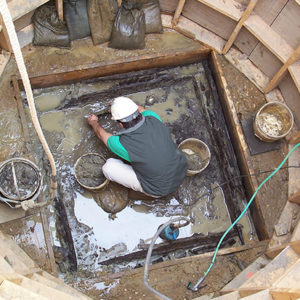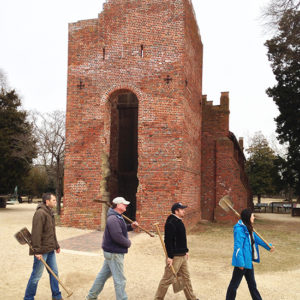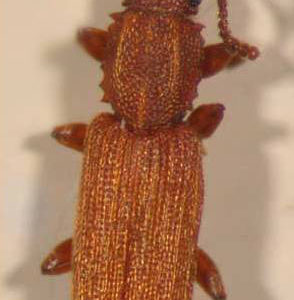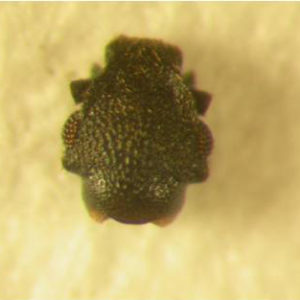 John, Paul, George and Ringo wanted to hold your hand in 1964. But the very first English beetles to invade North America wanted table scraps, bark and flour.
John, Paul, George and Ringo wanted to hold your hand in 1964. But the very first English beetles to invade North America wanted table scraps, bark and flour.
Among the 200,000 artifacts recovered from James Fort’s second well were pieces of bugs that give us precise details about life in the early years of the settlement.
The timber-lined well was excavated in 2005 and 2006. A halberd from Lord De la Warr’s guard that arrived in 1610 and a collapsing chimney base from Governor Samuel Argall’s 1617 residence established the years between which the well existed. The well was near the north bulwark, where the flagpole now stands within the fort’s recreated walls.
“A tremendous amount of organic material survived below the water table because in the waterlogged layers there was no free oxygen,” said Danny Schmidt, Senior Staff Archaeologist for the Jamestown Rediscovery Project. “That prohibited the growth of bacteria that would otherwise break down the organic artifacts.”
Three one-liter soil samples were sent to archaeoentomologists at the Universite Laval in Quebec (archaeoentomologists are scientists who study insects from archaeological contexts). Their microscopes revealed two dozen different European species in just those three samples.
“This is the earliest evidence of European invasive insects found on an archaeological site anywhere in North America,” Schmidt said.
Do you want to know a secret? Approximately 25% of all known life-forms on Earth are beetles (about 400,000 different species). Because many of these insects require a specific environment or food, their presence tells us some specific things about life in early James Fort.
The Trox scaber beetle lives near humans and benefits from their activities. It is a carrion feeder likely feeding on some sort of decaying organic material, such as table scraps. “These are common near stables or where there might have been feathers or even animal furs,” Schmidt said.
The saw-toothed grain beetle is common around spoiled grains: it has been found in warehouses, mills, granaries and brewery silos. Captain John Smith noted in 1607 that bugs had infested the colony’s store of grain. This beetle usually infests grains that are already ground into flour rather than the whole grains themselves.
And Carpelimus obesus lives in damp environments such as moldy areas of barked wood (not necessarily Norwegian wood). It’s preference for living in rotting, damp, compost-like vegetation may represent the environment around the well. Was there a pile of firewood nearby? Or is this a reflection that the fort’s palisade was made from wood that had not been stripped of its bark? There was a lot of bark found in the well among the hundreds of artifacts.
All three well samples contained species associated with indoor environments, implying that domestic waste and floor sweeping were likely discarded in the well. The identified beetle species are also strongly indicative of the presence of stored cereals, and the abundance of species associated with rotting or moldy cereals and vegetation implies the grains were likely in fairly poor condition.
“Just as artifacts and features can provide insight into the world of previous civilizations, studies on recovered flora and fauna may also serve as a window on environmental conditions,” Schmidt said.
“Many of these invasive European insects we now know were at Jamestown would have caused a considerable depletion of human resources, which in turn would put stress not only on the colonists but likely also on the Virginia Indians.”
In other words, these beetles were trouble eight days a week.
related images
- Carter Hudgins in the second Jamestown well
- Remind you of anything?
- Modern saw-tooth beetle
- Saw-tooth beetle head from the second well









